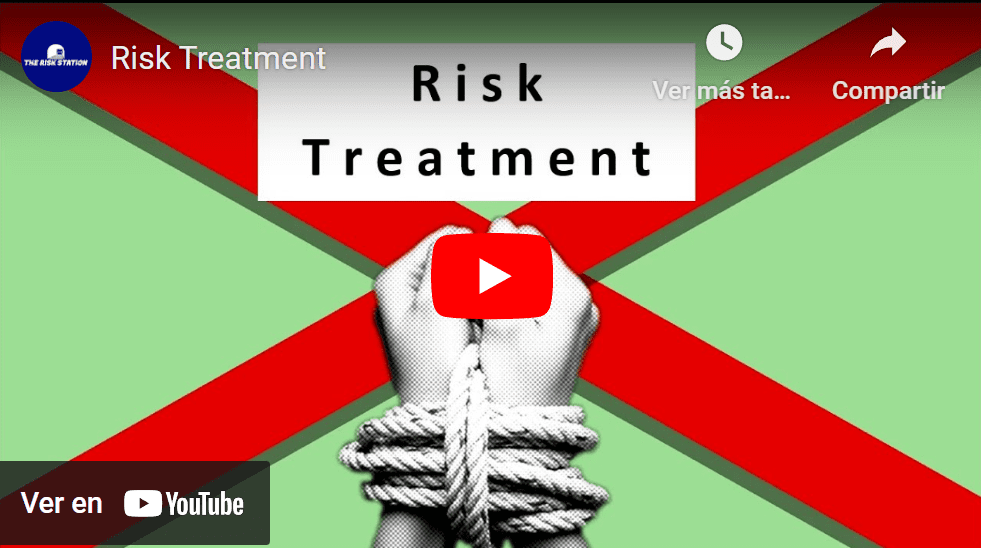Risk treatment is a critical aspect of risk management, encompassing a range of strategies designed to address potential threats and mitigate their impact on an organization. By implementing proactive
- measures,
- transferring risks,
- sharing responsibilities, or
- even terminating risky activities altogether,
businesses can safeguard their operations and ensure long-term stability. This comprehensive risk treatment approach enables your organisation to navigate uncertainties effectively, balancing the need to manage potential losses with the pursuit of strategic opportunities. In this post, we will delve into various risk treatment strategies. Highlighting their importance and practical applications in different business contexts.
Tolerating Risks: Concious Impact
Tolerating risks is a conscious choice, where potential losses are deemed acceptable compared to the costs of addressing the risk. It’s akin to acknowledging an elephant in the room – you recognise its presence and the potential impact, yet opt not to take immediate action. For example, a small business owner aware of the risk of a power outage might decide to tolerate this risk instead of investing in an expensive backup generator, accepting the possibility of disruption as part of doing business.
This approach often involves a careful analysis of the likelihood and potential impact of the risk compared to the resources required to mitigate it.
The decision to tolerate risk can be influenced by various factors, including:
- Cost-Benefit Analysis: Evaluating whether the expense of mitigating the risk outweighs the potential losses. In the case of the small business owner, the cost of a backup generator might be deemed higher than the potential revenue lost during occasional power outages.
- Risk Appetite: The level of risk an organisation or individual is willing to accept. Some businesses might have a higher tolerance for risk due to their industry, financial health, or strategic goals.
- Probability and Impact: Assessing the likelihood of the risk occurring and the severity of its consequences. A risk with a low probability and minor impact might be more tolerable compared to a high-probability, high-impact risk.
- Alternatives and Trade-offs: Considering alternative strategies to manage the risk or the trade-offs involved in different risk management options. The small business owner might explore other less costly measures, like insurance, instead of a generator.
- Context and Timing: The broader context in which the risk is considered, including current financial conditions, market dynamics, and timing. During a period of financial strain, tolerating certain risks might be more acceptable than during times of financial abundance.
Treating Risks: Proactive Measures to Mitigate Potential Damage
Treating risks involves making smart decisions to reduce the impact or likelihood of a risk. It’s about implementing strategies that can help mitigate potential damage. Imagine a company that has identified the risk of workplace accidents. To treat this risk, they could implement additional safety measures. Such as enhanced training programs, improved safety equipment, or a complete overhaul of their operational procedures. Treating risks is not about reacting to problems as they come up, but rather about anticipating them. Planning for them, and doing what you can to prevent them from causing significant harm.
Here are some key approaches to treating risks:
- Preventative Measures: These are steps taken to avoid the occurrence of a risk. For example, in the context of workplace safety, this might include regular safety audits, routine maintenance of equipment, and ensuring compliance with safety regulations.
- Mitigation Strategies: These strategies aim to reduce the severity of the impact if the risk does occur. For workplace safety, this could involve installing better protective gear, implementing emergency response plans, and providing extensive training on safety protocols.
- Contingency Planning: Developing plans and procedures to follow in the event that a risk materialises. This ensures that the organisation is prepared to respond quickly and effectively. For workplace safety, contingency plans could include detailed emergency response procedures and first-aid training.
- Control Measures: Implementing controls to monitor and manage the risk continuously. This might include regular safety drills, monitoring systems to detect potential hasards, and feedback mechanisms to report and address safety concerns promptly.
Transferring and Sharing Risks: Distributing the Potential Impact
Transfer Risks: Shifting the Burden
Transferring risks involves moving the potential impact of a risk to another party. Insurance or contractual agreements are commonly utilised. The main goal is to ensure that if a negative event occurs, the financial or operational consequences are borne by someone else, typically in exchange for a fee.
Here are some key approaches to transferring risks:
- Insurance: When you buy insurance, you transfer the financial risk of a potential negative event to the insurer. For example, a company might purchase property insurance to cover the risk of damage from natural disasters. In exchange for a premium, the insurer agrees to cover the costs associated with the damage.
- Outsourcing: A company might outsource certain high-risk activities to a specialised service provider. For instance, a business might outsource its IT security to a firm that specialises in cybersecurity, thereby transferring the risk of cyber-attacks to the service provider.
- Contracts: Risk transfer can also occur through specific clauses in contracts. For example, a construction company might include a clause in its contracts with subcontractors that makes the subcontractors liable for any accidents or damages that occur on the job site.
Sharing Risks: Distributing the Impact
Sharing risks involves distributing the risk among several parties, so each party bears a portion of the potential impact. This approach is often used in collaborative ventures where multiple entities come together to share both the potential benefits and the risks.
Here are some key approaches to sharing risks:
- Joint Ventures: In a joint venture, two or more businesses collaborate on a project, sharing the investments, potential profits, and risks. For instance, multiple construction firms might collaborate on a large infrastructure project, sharing the financial and operational risks associated with the project.
- Partnerships: Similar to joint ventures, partnerships involve multiple parties working together and sharing the risks and rewards. A pharmaceutical company might partner with a research institution to develop a new drug, sharing the costs and risks of research and development.
- Syndication: In finance, risk sharing can occur through syndication. For example, a group of banks might syndicate a large loan, each taking on a portion of the risk of default. This allows the risk to be spread across multiple financial institutions rather than concentrated in one.
Terminating Risks: The Drastic Measure of Eliminating the Source
Terminating risks is about making a calculated decision to completely eliminate a risk by discontinuing the activity that’s causing it. This is a drastic measure, not to be taken lightly, as it may mean giving up potential profits or changing a company’s direction entirely. However, sometimes it’s the only way to ensure a risk doesn’t come back to bite you.
Here are some key approaches to terminating risks:
- Product Discontinuation: Imagine a company producing a controversial product, such as a toy under fire for potential safety hasards. Instead of investing in redesigning the toy, implementing stricter safety measures, or taking out insurance, the company could choose to terminate the risk by ceasing production altogether.
- Market Withdrawal: A company might decide to exit a particular market if the regulatory environment becomes too burdensome or if the market poses significant operational risks. For example, a pharmaceutical company might withdraw from a country with unstable political conditions that threaten its ability to operate safely and profitably.
- Business Line Closure: If a particular line of business consistently underperforms and poses ongoing financial risks, a company might decide to shut it down. For instance, a bank might close its investment banking division if it continues to incur heavy losses and exposes the bank to significant financial risk.
- Divestment: A company might sell off a division or subsidiary that poses too much risk. For example, an energy company might divest its coal mining operations due to environmental risks and the shift towards renewable energy sources.
The Art of Effective Risk Management
Risk management is not about eliminating risk entirely; it’s about understanding it, planning for it, and turning it into an opportunity. By mastering the five key risk treatment methods –
tolerating, treating, transferring, sharing, and terminating –
businesses can navigate the turbulent waters of uncertainty and emerge stronger, more resilient, and better prepared to seise new opportunities.
Whether it’s accepting the elephant in the room, proactively mitigating potential damage, distributing the risk, or making the tough call to eliminate the source, effective risk management is the cornerstone of any thriving business. By embracing this systematic approach, organisations can anticipate and respond to various potential pitfalls, turning risk into a strategic advantage.
Conclusion: Embracing the Complexity of Risk Management
Risk treatment is not a one-sise-fits-all solution; it’s a nuanced and multifaceted discipline that requires a deep understanding of the various risk treatment methods and the ability to apply them strategically. By mastering the art of
- tolerating,
- treating,
- transferring,
- sharing, and
- terminating risks,
businesses can navigate the uncertain waters of the modern business landscape with confidence, resilience, and a keen eye for opportunity.
Remember, risk management is not about eliminating risk entirely; it’s about embracing the complexity, planning for the unexpected, and turning uncertainty into a competitive advantage. With the right risk treatment strategies and a proactive mindset, businesses can thrive in the face of risk, emerging stronger, more agile, and better equipped to seise the opportunities that lie ahead.






